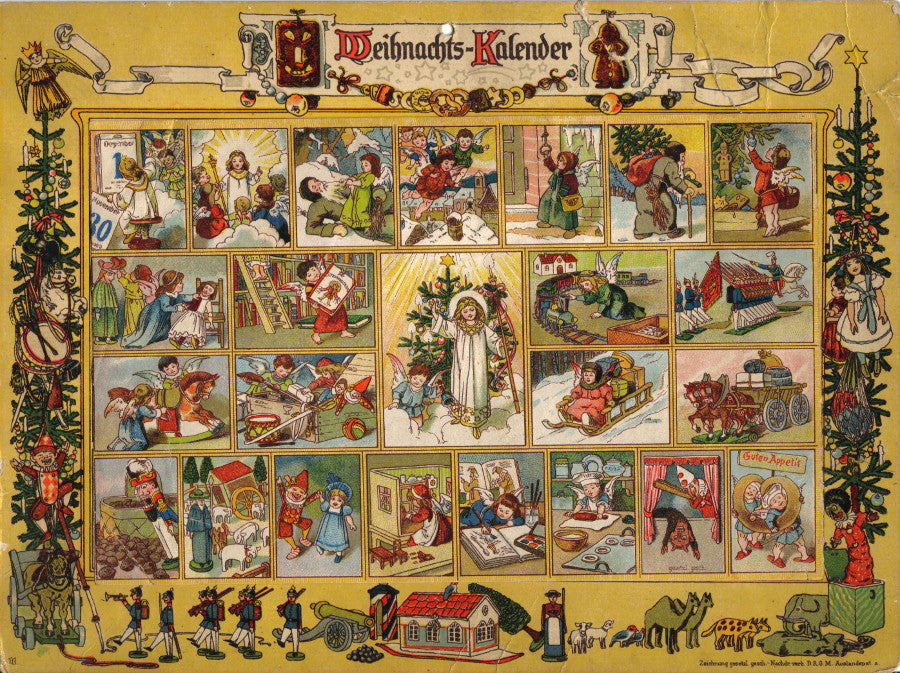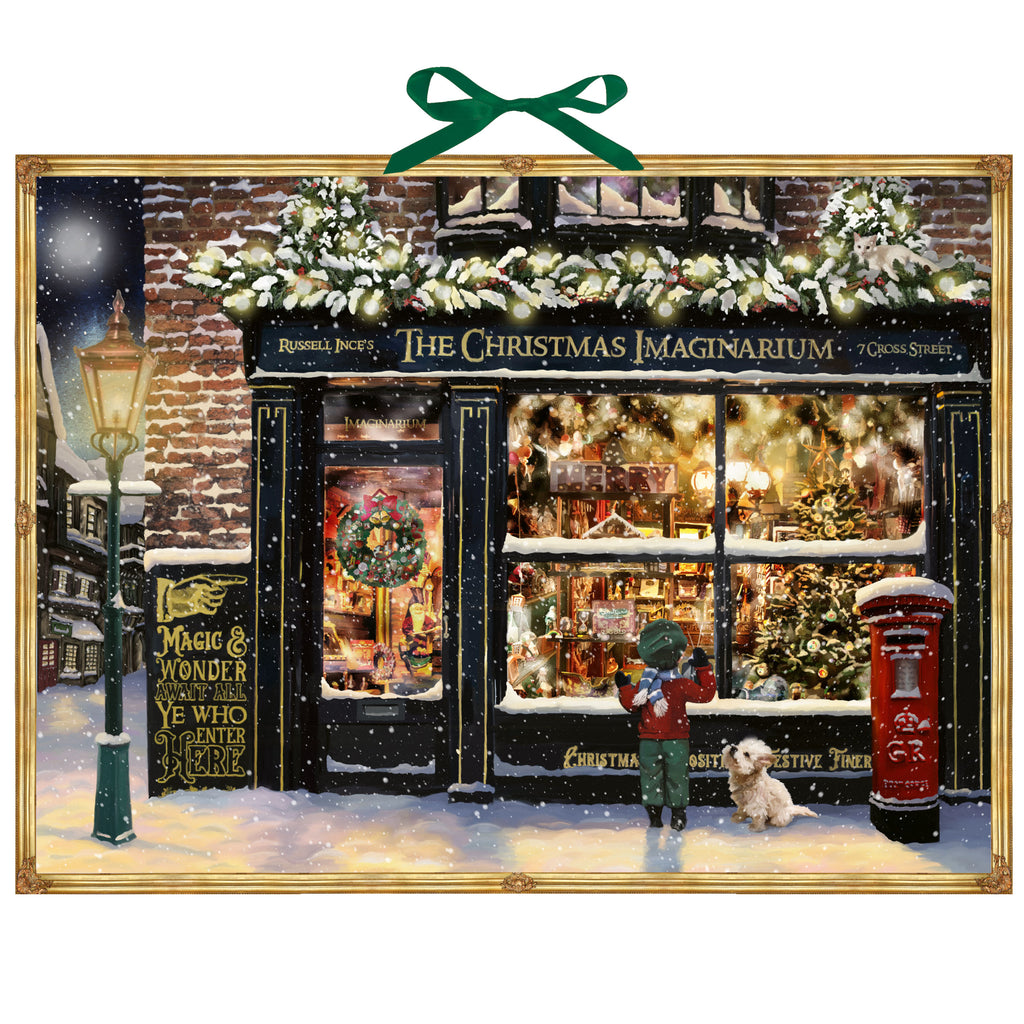It would be a difficult task to find someone in the Western world who hasn’t heard of an Advent Calendar. They seem a ubiquitous part of Christmas itself. But, did you know that Advent Calendars are a relatively modern tradition?
What is Advent?
Advent itself is a Christian festival that begins on the fourth Sunday before Christmas and lasts until Christmas Eve.
Advent Sunday can fall anywhere between 27th November and 3rd December, and is observed by faiths including Roman Catholicism, Western Orthodoxy, and many Protestant denominations.
In 2022, Advent Sunday will falls November 27th, making it the longest possible Advent period; next year, it will be the shortest, falling on 3rd December 2023.
Advent comes from the Latin word 'adventus', meaning arrival; it is considered a time of waiting and preparation for Christmas.
How did Advent Calendars come about?
The Advent Calendar tradition, like many other well-known Christmas traditions, originated in Germany. The earliest known advent calendars date back to the 19th century, where references are made to nativity cribs having straw pieces placed in them each day of Advent for children to count the days until Christmas, chalk markings being scribed over doors, which were wiped away as each day passed, and pictures being added to wallpaper, so children could see when twenty-four pictures were present, Christmas had arrived.
These sorts of Advent customs become popular among Lutherans and are thought to have spread to other Christian denominations across the country from there.
The most commonly credited inventor of traditional Advent calendar, as we know it, is Gerhard Lang - The story goes that his mother would give him 24 biscuits sewn to the lid of a box, and he was allowed to eat one every day in the lead up to Christmas. This gave him the idea for his first Advent Calendar which was released in 1908 with his business partner Reichhold, as 'Reichhold & Lang'.
A few years later, he would introduce the idea of having doors to open each day, with pictures behind, which quickly became a synonymous part of the traditional advent calendars we still enjoy to this day.

Lang went on to try out many different Advent Calendar concepts during his time in business, including advent calendars with Braille, 3D advent calendars constructed from card, and the first known advent calendar with chocolates inside in 1926.
Traditional Advent Calendars
Sales of Advent Calendars may have been a little on the slow side to start off with, particularly with the First World War and subsequent rationing, but the idea quickly garnered popularity in the 1920s, and by the 1930s many other German companies were producing their own picture advent calendars.
The onset of the Second World War saw paper and card rationed again, and the printing of advent calendars was halted (with the exception of a calendar approved and made by the Nazi party!)
They quickly went back into production after the end of the war, with Richard Sellmer - a family company that still manufacturers over million traditional advent calendars each year - emerging as the leading name.
Richard Sellmer was keen to focus on spreading the idea outside of the German-speaking world and partnered up with President Dwight D. Eisenhower to set up a charity. Eisenhower and his family were photographed opening one of Sellmer's advent calendars, and they became an instant hit.
Alternative Advent Calendars
Throughout the remainder of the 20th century sales of Christmas advent calendars boomed, and present-day Advent Calendars are now available in the hugest multitude of styles, from the hundreds of branded chocolate Advent calendars many of us will be familiar with, to far more elaborate pre-filled Advent Calendars, loaded with sweets, treats, trinkets, tipples and more...
In fact, in 2022, it's pretty much possible to get an Advent Calendar with just about anything inside!
There are, however, plenty of Advent Calendar alternatives and some much less materialistic ways mark the advent season and to countdown the days until Christmas:
In the Nordic world, an iconic television show called 'Julekalender' - which originated in Sweden in 1962 - airs twice a day during December and remains very well-received to this day.
Back in the home of Advent Calendars, the Gengenbach town hall in Germany decorates its 24 windows for the season, with one revealed each evening in turn.

‘The Atlantic’, an American magazine, celebrates Advent by collecting images from the Hubble Space Telescope and publishing a new one each day.
Added to which, in the last few years, there has been an explosion of 'living advent calendars' involving people, places and community events. From beach huts to businesses, churches to charities, there are scores of groups organising fun events each night - from food and drink to live music - all marking the season and most raising money for a good cause.
Why not have a look in your area and join in the festivities on a large scale?
The future of Advent Calendars
In recent years, particularly amongst adults, there has been a resurgence of popularity towards traditional Advent Calendars made from paper and card, with engaging imagery behind the windows, rather than products. There has also been a push for reusable ones, generally made out of wood or fabric, that can be brought out year on year and which can be used to make your own personalised Christmas tradition (allowing the gifts inside to be tailored to your own needs!).

Ultimately, whether you are one enjoy the simple nostalgic pleasure of opening the doors on a traditional advent calendar, or instead you prefer to be showered with miniature gifts from a fill your own advent calendar; whether you methodically search for the advent calendar window to open each day, or if you’re the type to forget for a few days and get to enjoy lots of treats at once - the fun and excitement of an Advent Calendar never really wears off, no matter your age!
Written by: Jack Raynsford









